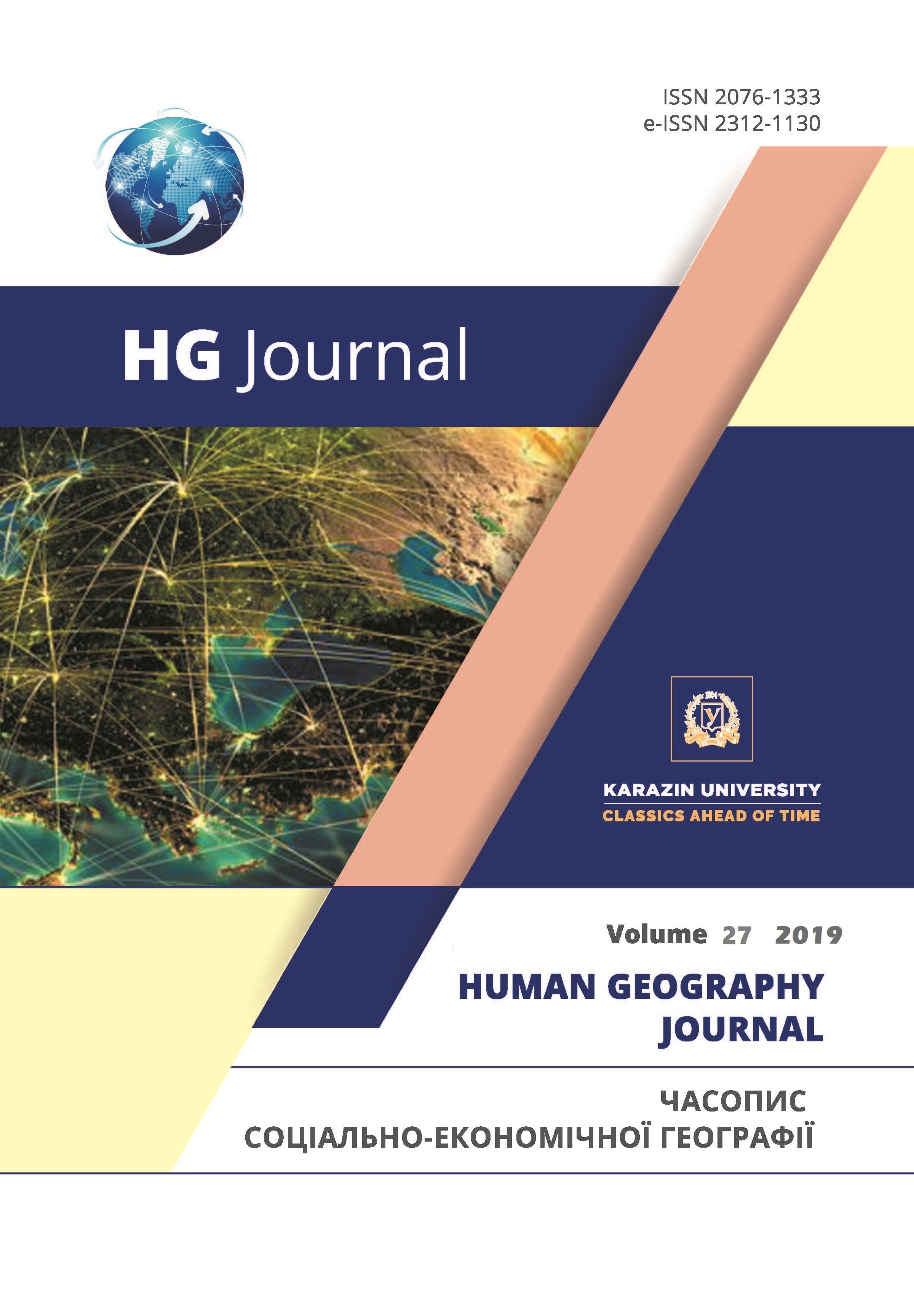Methodological levels of research the post-industrial development of the city
Abstract
Since the middle of the twentieth century, most countries of the world are in a phase of significant socio-economic transformations. The main vector of these transformations is the transition to the post-industrial stage of development, which was predicted by a number of scientists from many industries at the turn of the nineteenth and twentieth centuries. There is a logical relationship between the level and stage of development of the country. So the highly developed countries of the world are already in the phase of post-industrial development. For countries with a low level of development and a powerful and complex industrial past, such as the post-Soviet and post-socialist countries of Eastern Europe, the transition to post-industrial development, the so-called post-industrial transformations, is characteristic. A detailed study of these processes makes it possible to predict the possible paths of developed countries and individual territories.
The city, as the main agent for transforming the territory, plays a major role in the country's transition to the post-industrial level of development. This article is devoted to the methodological features of studying the features of post-industrial urban development. In contemporary human geography, there is an active discourse on the issue of methodological support for research, which mainly focuses on the feasibility of applying qualitative and quantitative methods and the possibilities of their interdisciplinary application. However, in our opinion, the more complex the object of study, the wider and more directional should be the methodological apparatus of research. In this case, one should take into account the territorial aspect of this study and select methods solely for their effectiveness in achieving their goals. The author proposes to classify research methods of the features of the post-industrial development of the city according to hierarchical levels of influence of the city: global, regional and local levels. Also, this paper offers a generalized algorithm of socio-geographical study of features of post-industrial urban development, which presents the main stages of the study and proposes the most common methods of study.
Downloads
References
Bell, D. (1967). Notes on the postindustrial society. The Public Interest, Is. 7, 102-118.
Currans, E. (2018). Encountering Detroit: The Post-Industrial City as Stage, Liminalities: A Journal of Performance Studies, Vol. 14, No. 4. Retrieved from: http://liminalities.net/14-4/detroit.pdf
Flowerdew, R. & Martin, D. (2005). Methods in Human geography. Pearson Education Limited, 392.
Niemets, L., Lohvynova, M., & Suptelo, O. (2019). Sociological methods in human-geographic researches: features of application. Chasopys sotsialno-ekonomichnoi geografii – Human Geography Journal, 26, 13-23.
Niemets, K. (2006). Suspilna geografiya: problemy i novi horyzonty [Human geography: problems and new horizons]. Chasopys sotsialno-ekonomichnoi geografii – Human Geography Journal, 1, 60-69 [in Ukrainian].
Niemets, K., & Niemets, L. (2012). Osoblyvosti sotsioekosystemy yak obyekt sotsialno-ekonomichnoi geografii [Features of socio-ecosystem as an object of socio-economic geography]. Chasopys sotsialno-ekonomichnoi geografii – Human Geography Journal, 12, 39-42 [in Ukrainian].
Niemets, K.A., & Niemets, L.M. (2014). Teoriya i metodologiya geografichnoi nauky: metody prostorovoho analizu [Theory and methodology of geography: spatial analysis methods]. Kharkiv: KhNU imeni V.N. Karazina, 172 [in Ukrainian].
Niemets, L., & Mezentsev, K. (2019). Sotsialna geografiya [Social geography]. Kyiv: Feniks, 304 [in Ukrainian].
Penty, A.J. (1922). Post-industrialism. New York: The Macmillan Company, 14.
Perroux, F. (1970). Note on the Concept of Growth Poles. Regional Economics: Theory and Practice. New York: The Free Press, 93-103.
Rousseau, M. (2013). Post-industrial cities: towards a new approach. Retrieved from: https://www.metropolitiques.eu/Post-industrial-cities-towards-a.html
Sadowy, K., & Lisiecki, A. (2019). Post-industrial, post-socialist or new productive city? Case study of the spatial and functional change of the chosen Warsaw industrial sites after 1989. City Territ Archit 6, 4. Retrieved from: https://cityterritoryarchitecture.springeropen.com/articles/10.1186/s40410-019-0103-2
Shabliy, O.I. (2001). Suspilna geografiya: teoriya, istoriya, ukrainoznavchi studii [Human geography: theory, history, ukrainian knowledge]. Lviv: LNU im. I. Franka, 744 [in Ukrainian].
Toffler, A. (1980). The Third Wave. London: Bantam Press.
Topchiyev, O.H. (2005). Suspilno-geografichni doslidzhennya: metodologiya, metody, metodyky [Human geography researches: methodology, methods, techniques]. Odesa: Astroprynt, 631 [in Ukrainian].
Weber, М. (2001). Istoriya khozyaystva. Gorod [The history of the economy. Town] Trans. and Eds by Grevsa; I. Moscow “KANON-press-TS”, “Kuchkovo pole”, 576 [in Russian].
Wójcik, M., Tobiasz-Lis, P., & Dmochowska-Dudek, K. (2017) Problems of post-industrial city development. Tensions between the structure and image of Łódź (Poland). Retrieved from: https://relocal.eu/problems-of-post-industrial-city-development-tensions-between-the-structure-and-image-of-lodz-poland/
Copyright (c) 2019 Suptelo O.

This work is licensed under a Creative Commons Attribution 4.0 International License.




